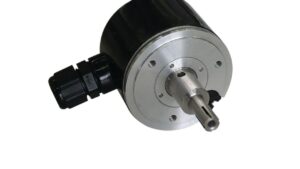Common Mistakes to Avoid When Using Swivel Hooks in Rigging
Are you confident in your rigging techniques? While rigging equipment is designed for safety and efficiency, improper use can lead to accidents or equipment failure. Understanding how to use swivelling hooks is critical for ensuring safe lifting and load control.
However, even experienced operators can make mistakes if they are not familiar with the nuances of rigging equipment. When not used correctly, it can become a point of failure, leading to unsafe conditions. This article will dive into operators’ most frequent mistakes with the swivel hook and how to avoid them.
Improper Load Weight Estimation
One of the most common mistakes when rigging equipment is underestimating the load weight. Every hook has a rated capacity, the maximum weight it can safely lift. Exceeding this limit can cause the hook or the entire rigging system to fail. Using a hook beyond its limits can lead to catastrophic consequences, including accidents or damage to valuable materials.
Neglecting to Inspect the Hook Before Use
Another frequent error is failing to inspect equipment before use. Over time, hooks can experience wear and tear, compromising their strength and reliability. Operators must perform routine inspections to check for visible damage, such as cracks, deformities, or corrosion. A simple pre-use inspection can prevent rigging accidents and ensure safe lifting procedures.
Using the Hook Without a Secure Connection
Ensuring a secure connection between the hook and the load is critical. A common mistake is failing to properly secure the hook to the load, which can result in slippage or even a complete detachment. Double-check that the load is firmly connected and that all latches or locks are securely in place. Loose or improperly fastened connections can cause the load to shift unexpectedly, leading to an unsafe working environment.
Overlooking the Swivel Feature
Many operators don’t fully utilise the swivel feature. The ability to rotate is designed to reduce twisting and tension in the rigging line. Ignoring this feature and allowing the line to twist can increase stress on the equipment and lead to failure. Ensure the hook is free to swivel as needed, reducing the strain on the rigging setup and ensuring smooth load handling.
Incorrect Angle of Lifting
The angle at which you lift a load can significantly impact the safety and efficiency of the process. Lifting at an improper angle can strain the hook and the rigging system excessively. The angle should be as close to vertical as possible to distribute the weight evenly. Always aim for a straight lift to keep the load stable and safe.
Not Following the Manufacturer’s Guidelines
Manufacturers provide detailed guidelines for equipment, and failing to follow these instructions is a common mistake. Each one is designed for specific tasks and conditions; using it outside those parameters can compromise safety. Review the manufacturer’s recommendations regarding load capacity, maintenance, and operating conditions. These guidelines are put in place to maximise the lifespan and performance of the equipment while ensuring safe usage.
Ignoring Environmental Factors
Environmental conditions, such as extreme temperatures or exposure to chemicals, can weaken the integrity of the equipment. It’s a mistake to assume that all hooks suit any environment. Exposure to corrosive elements or excessive heat can degrade the material, making it more prone to failure. Failure to account for these factors can lead to unexpected failures during operation.
Proper use of a swivel hook is essential to maintaining safe and effective rigging operations. Following best practices and adhering to manufacturer guidelines are crucial steps to avoid accidents and prolong the life of your tools. Make these steps part of your routine, enhancing safety and efficiency in rigging tasks.







